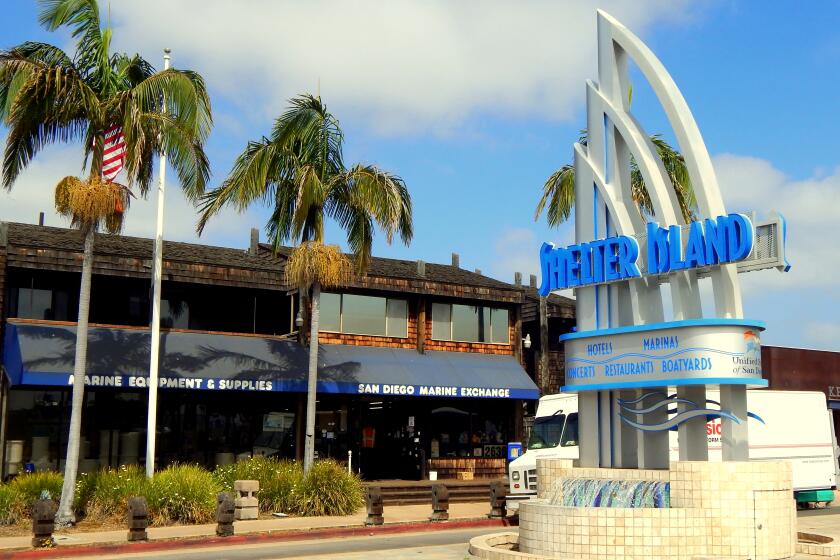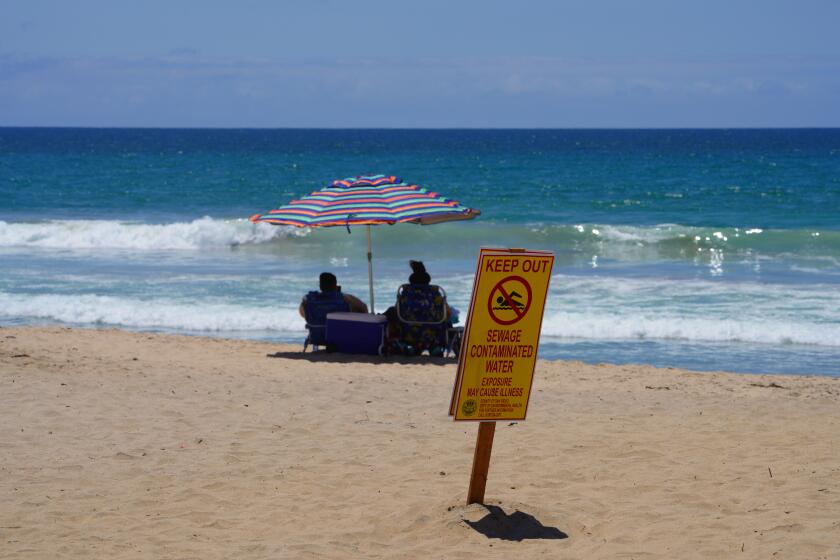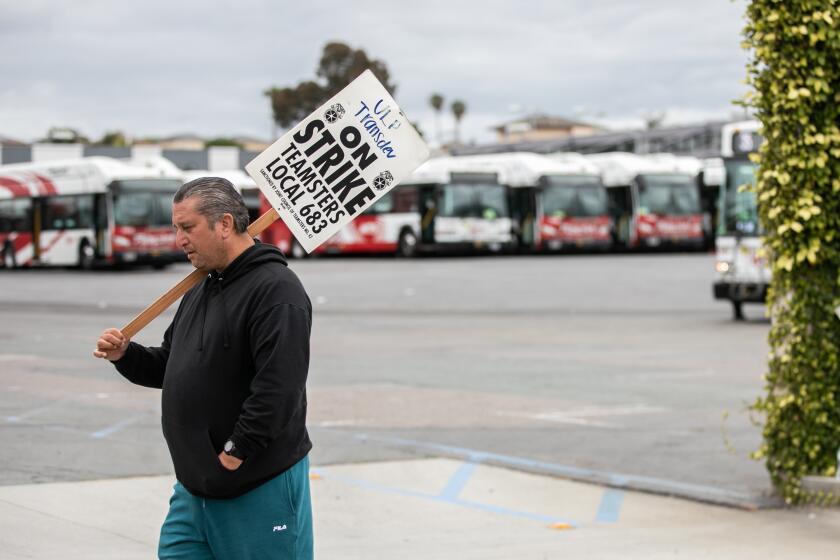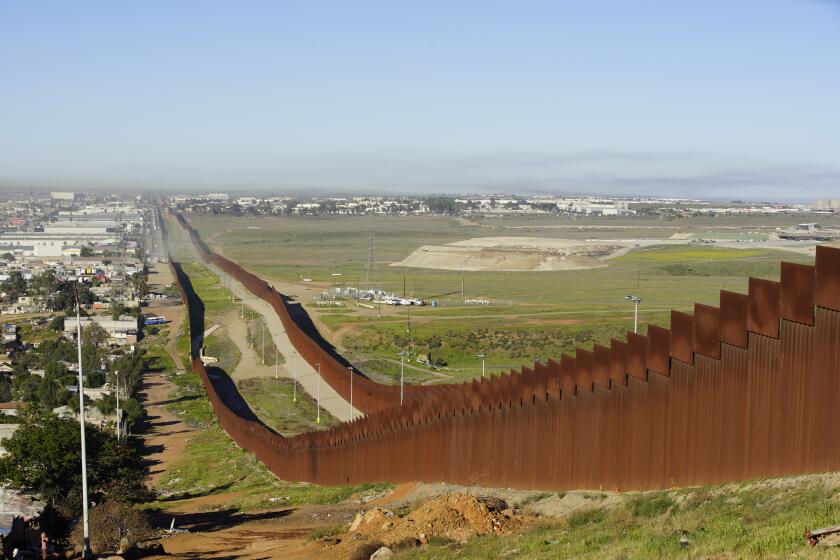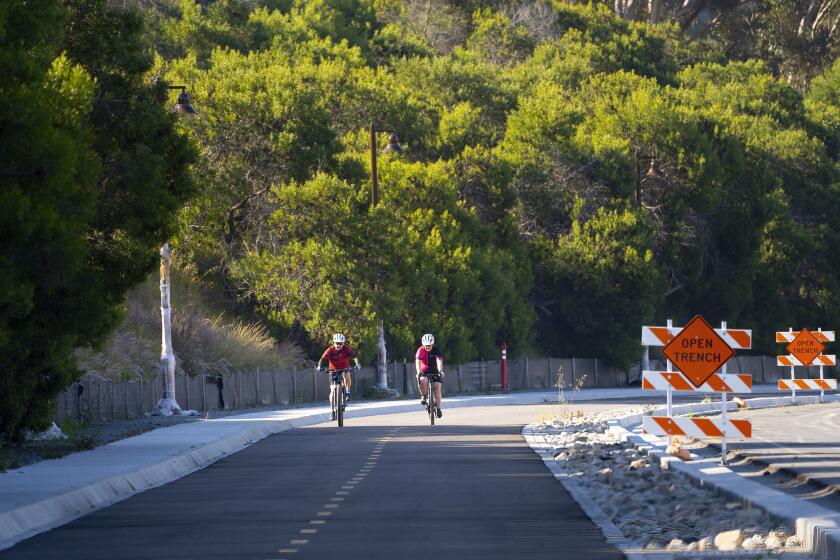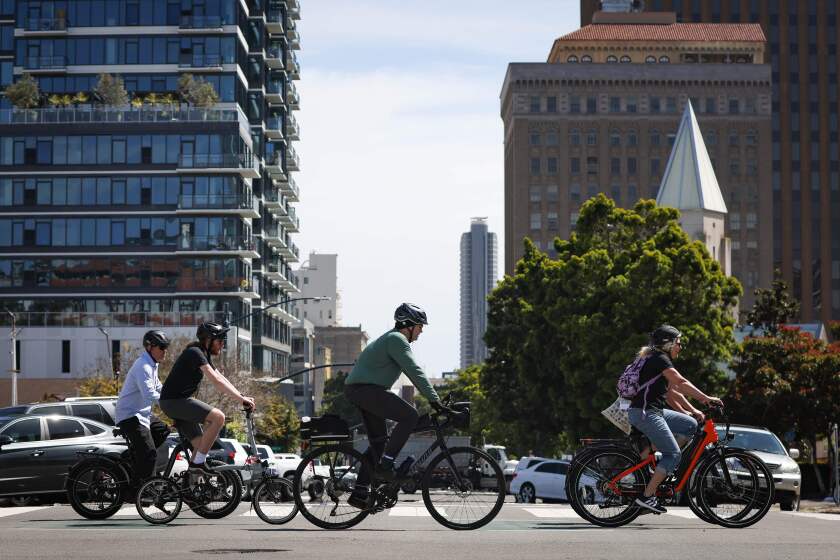SANDAG’s proposed ‘road charge’ would piggyback on California’s plans for a per-mile driver fee

Republicans say such a charge would burden already overtaxed drivers to pay for expensive transit projects. Supports say it’s badly needed to eventually replace the gas tax.
San Diego’s more than $160-billion proposal to expand rail, bus and other transportation services throughout the region relies heavily on California’s still nascent plans for a so-called road charge. The fee being explored would charge drivers a set price for every mile traveled within the state.
The proposed Regional Transportation Plan, drafted by the San Diego Association of Governments, anticipates collecting more than $34 billion in these per-mile fees through 2050.
Joshua Emerson Smith on San Diego News Fix:
How to collect those road charges — currently the single largest source of revenue in SANDAG’s draft blueprint — is still being explored under a state pilot program that could run through 2026. Options include everything from transponders to smart phones to routine odometer readings as a way to monitor the driving distances of the roughly 26 million vehicles registered in California.
The goal of state leaders is to replace its waning gas tax before electric and increasingly fuel-efficient vehicles make it all but obsolete.
The idea of a per-mile fee has frustrated some local Republicans, who’ve said that SANDAG’s vision would unfairly tax motorists to pay for expensive transit projects. The plan’s marquee venture is a 200-mile regional rail system with a dozen new train stations and a price tag of more than $43 billion.
“Usually, when you pay a user fee, it’s to pay for what you’re actually using,” said San Marcos Mayor Rebecca Jones. “What’s being proposed by SANDAG is using the fee to pay for a new mass transit system.”
The agency’s top brass said their approach will benefit drivers as much as transit users, citing the plan’s anticipated spending on highway maintenance and operations of more than $18 billion through mid-century. They said investments in rail as well as dedicated freeway lanes to serve buses, carpools and paying customers, would ensure speedy travel times for all commuters.
“There’s a lot going toward roadways here,” said Coleen Clementson, SANDAG’s director of regional planning. “It’s not an all-transit plan by any means.”
Some have cautioned against banking too much on speculative revenue sources, such as road charges, to pay for ambitious long-range projects. They fear such an approach could distract from making more immediate upgrades to the existing bus and trolley systems.
“It’s OK to take an optimistic view of the future,” said Colin Parent, executive director of the nonprofit think tank Circulate San Diego, “but it’s also important to ensure that current revenues are dedicated toward transit that we can afford to build today.”
Still, SANDAG can’t do much until it secures new funding sources. The agency continues to grapple with a cash crunch as its only sales tax, Transnet, is expected to bring in roughly half of the $39 billion initially projected over its 40-year lifespan.
Beyond revenue from road charges, the agency’s draft plan anticipates collecting funding from two future sales tax increases totaling approximately $17 billion over the next three decades. Such levies would require approval at the ballot box and could be before voters as soon as next year.
Road charge pilot
SANDAG’s plan to collect a per-mile fee from drivers would piggyback on a little-known state program still under design. The San Diego agency expects the state to levy a tax on drivers of roughly 2 cents a mile, onto which it would tack a regional 2-cent charge for a total of 4 cents per mile driven.
California launched its road charge pilot in 2015 at the direction of the Legislature. The program, overseen by the California Transportation Commission, has so far included more than 5,000 vehicles, from passenger cars to commercial trucks.
The state secured a substantial injection of transportation funding with the passage of Senate Bill 1, the Road Repair and Accountability Act of 2017. The legislation, which raised the state’s gas tax and other vehicle fees, is expected to bring in about $54 billion over the next decade.
However, experts widely acknowledge the need for a replacement as fossil fuels are phased out in the fight against climate change. Other states have already started experimenting with per-mile fees, including Utah and Oregon.
“Some replacement of the gas tax is needed, and a road usage charge is the most likely mechanism,” said Daniel Sperling, founding director of the UC Davis Institute of Transportation Studies and a member of the state Air Resources Board.
One of the top objectives of the state’s pilot program was to develop a reporting system that safeguards privacy while limiting fraud and compliance concerns. Methods explored have included pre-paid mileage permits, post-paid odometer charges and real-time transponder systems.
Trial reporting systems have included those with and without location data to explore the tradeoffs between privacy and the desire to distinguish between in and out-of-state travel. Real-time location data could also be used to increase road charges in heavy congestion as a way to discourage gridlock traffic.
A status report on the pilot was issued to the Legislature in 2017, with elected leaders quickly extending the program through 2023. This year, Sen. Scott Wiener, D-San Francisco, introduced SB 339 to push that date back to the start of 2027, with additional reports due in 2024 and 2026.
SANDAG’s current draft plan calls for collecting revenue from road charges starting in about five years, but officials said that date will likely be extended to coincide with the state’s efforts.
“It’s probably looking more like 2030, so we’ll be making that adjustment in the final plan,” said Ray Major, SANDAG’s chief economist.
State officials are now wrestling with whether to adopt a flat per-mile fee or charge more to drivers with less fuel-efficient vehicles. While the latter would be more complicated and costly to administer, it would retain the incentive for adopting cleaner vehicles created by the current levy on motor fuel.
“The gas tax, regardless of how much revenue it raises, is in fact a climate tax, a carbon tax,” said Michael Manville, a professor of urban planning at UCLA’s Luskin School of Public Affairs. “We probably shouldn’t just throw that out the window.”
Get Essential San Diego, weekday mornings
Get top headlines from the Union-Tribune in your inbox weekday mornings, including top news, local, sports, business, entertainment and opinion.
You may occasionally receive promotional content from the San Diego Union-Tribune.

